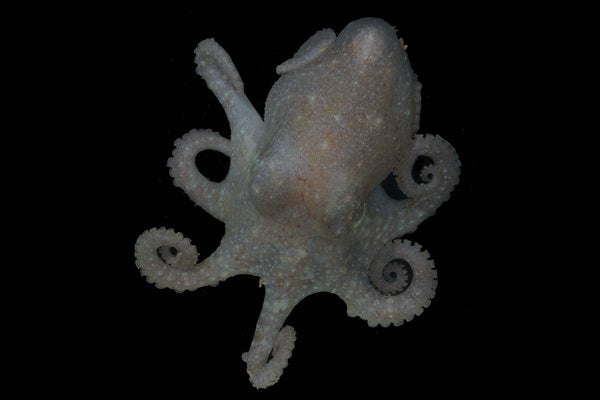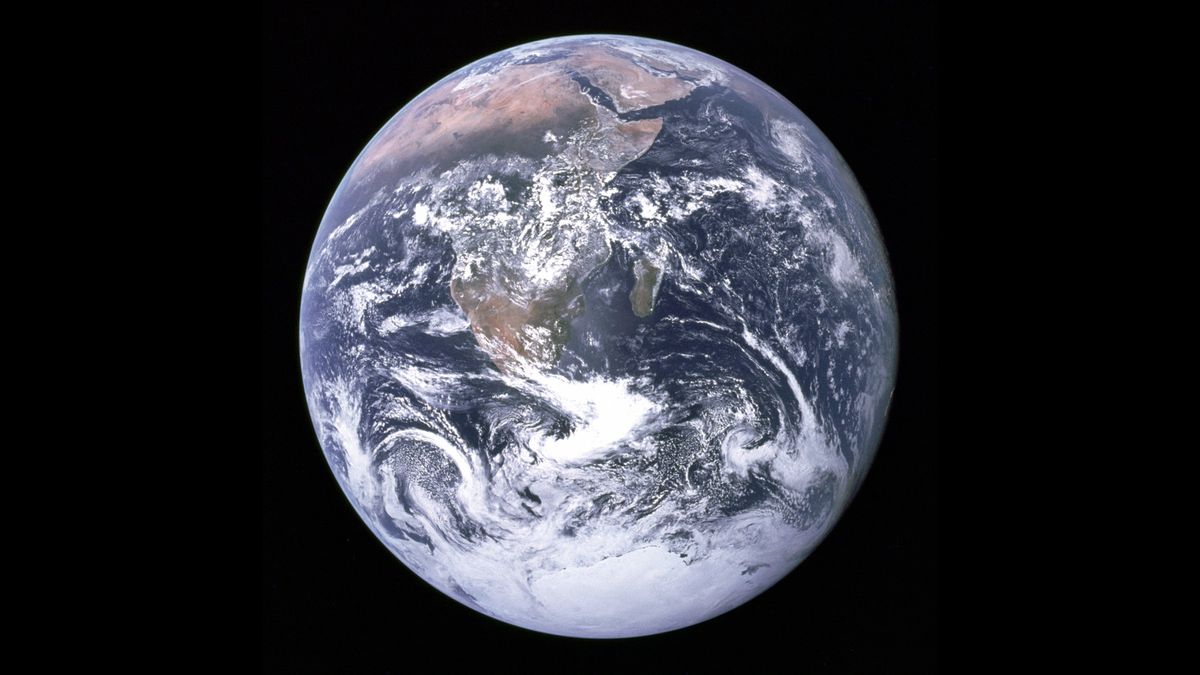December 21, 2023
4 min read
As the climate crisis continues, sooner or later the massive West Antarctic Ice Sheet will collapse. An unassuming octopus just gave scientists an important clue about how quickly that might happen
Turquet’s octopuses are found all around Antarctica crawling along the seafloor.
Scientists who are trying to understand Antarctica’s past face a daunting challenge. Ice doesn’t fossilize, so there’s no direct evidence showing how far the southernmost continent’s glaciers stretched in the distant past. That’s a problem because it makes predicting Antarctica’s future in an ever warming world more difficult.
Enter Turquet’s octopus (Pareledone turqueti). This little creature scuttles along the seafloor around Antarctica, and in new research, scientists use its genetics to argue that a major Antarctic ice sheet completely collapsed at a time in the past when temperatures were just one degree Celsius warmer than the preindustrial period. Called the West Antarctic Ice Sheet, the swath of ice regrew to encompass 770,000 cubic miles of ice today, but if it were to collapse again, its meltwater would raise sea levels by more than 10 feet around the world.
“This is really the first biologic evidence that’s being used for past collapse, and I think that that is the really special and surprising thing about this paper,” says Ryan Venturelli, a paleoglaciologist at the Colorado School of Mines, who was not involved in the new research. “I think it’s just incredible that we can use populations of octopus to teach us about the history of the Antarctic ice sheet.”
This sort of research wouldn’t be feasible with just any species, says Sally Lau, an evolutionary geneticist at James Cook University in Australia and co-author of the new research, which was published on December 21 in Science. “We need a species that is distributed all around Antarctica but [that] generally [does] stay in one place,” she says. “If it swims too much and moves too often around Antarctica, then any historical signatures of migration and exchange of genetic material will get eroded by how fast [it is] moving right now.”
Turquet’s octopuses fit the bill because they are found all around Antarctica and crawl on the seafloor rather than swim long distances, Lau says. For the new study, she and her colleagues analyzed nearly 100 samples of DNA from such octopuses that were either found in museum collections or accidentally captured by fishing vessels.
When they looked at the animals’ genetic material, Lau and her colleagues noticed geographic trends. For example, the octopuses found around Shag Rocks and South Georgia, two island clusters east of the tip of South America, were quite similar—just as you’d expect because these populations are closer to each other than they are to different populations.
When it came to the populations around the West Antarctic Ice Sheet, however, what the researchers saw was more surprising. Modern octopuses living in the Ross Sea, tucked into the nook on one side of where the West Antarctic Ice Sheet meets the rest of Antarctica, shared genetic material with animals located around the coast of the mainland—but also with the octopuses on the opposite side of the ice sheet’s joining point with the continent in the South Weddell Sea. Today a Turquet’s octopus would need to swim countless miles around the jutting peninsula that points toward South America to pass between these two seas, an unlikely feat for these unadventurous swimmers, Lau says.
Instead the researchers argue that the genetic similarities between these two populations is a relic of a time when the West Antarctic Ice Sheet had completely melted, leaving shallow seaways connecting the Ross and Weddell Seas. And the genetic analysis suggests that these two populations began intermingling more than three million years ago and were separated between 139,000 and 54,000 years ago. That time line matches previous suspicions that the West Antarctic Ice Sheet had completely collapsed during the Last Interglacial, a warm period that occurred 130,000 to 115,000 years ago.
Until now, however, glaciologists and geologists have had limited tools to try to understand whether the sheet fully collapsed or merely shrank. Their most helpful technique so far has been the analysis of sediment cores—long cylinders of layered sediment laid down over past years and even centuries—which often come from beyond the ice sheet itself. “We, for so long, have been coming at this question from kind of the same old tricks,” Venturelli says. Analyzing the genetics of modern animals marks a totally different approach to add to the tool kit.
And understanding the history of the West Antarctic Ice Sheet may sound arcane, but that couldn’t be further from the truth, says Ted Scambos, a polar scientist at the University of Colorado Boulder, who was not involved in the new research. The fragility of this ice sheet will shape the fate of humans around the world, he says, making any insight valuable, even from as unlikely a source as an octopus.
With the new findings, he says, scientists can better predict the time line of the ice sheet’s future human-driven collapse—whether its loss will occur in the next century or two or require 400 or 500 years. From there, scientists can more accurately calculate the pace of rising seas and give societies the time they need to move inland.
“It’s the most uncertain and hard to forecast threat for sea-level rise in the next two or three centuries,” Scambos says. “It’s not hard to understand how warmer ocean temperatures or warmer air temperatures eventually will affect it. The question is: How fast will it come apart?”




